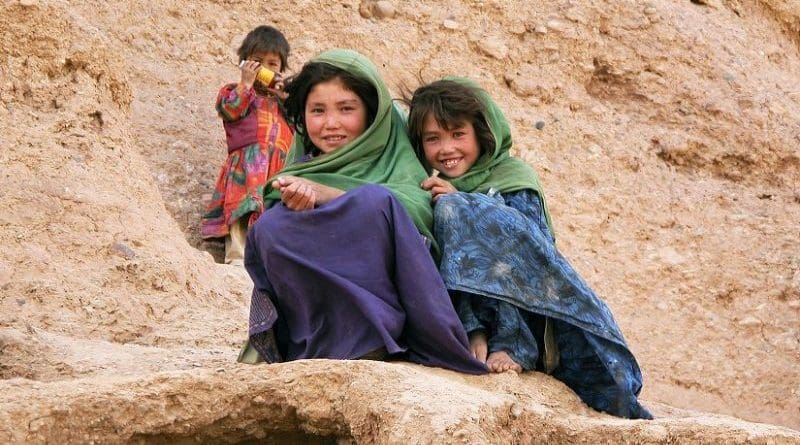Aftermath Of War In Afghanistan: A Generation Of Lost Futures – OpEd
The United States, after it shed the blood of thousands, made myriad homeless, induced fear and post-traumatic stress, rolled a whole nation back to the Stone Age with bleak hope for the future, decided to lift its boots off the ground and flew out of Afghanistan. It went into Afghanistan in 2001 only to leave after two decades by replacing ‘Taliban 1.0’ with ‘Taliban 2.0’, a so-called terrorist group that seemed to have become immune to Washington’s attempts to eliminate it.
The Afghan war cost Washington over USD 2 trillion. However, the ones who had to pay the maximum price were neither the Americans nor the Taliban, rather it was the Afghan people. The common Afghans, who did nothing to provoke this war, had to pay a heavy price and continue to pay. They were forced to leave their homes, witness death, endure trauma, violence, hunger, malnutrition, stress, and anxiety, amongst the countless impacts of war.
Suffering more than four decades of this ‘forever’ war, Afghans are considered one of the largest protracted refugee populations in the world. According to the UNHCR, about 6 million Afghans have been displaced from their homes. Among those, more than 2.5 million are registered as refugees in other countries. This makes them the second largest refugee population after Syria. More recently, the UN Office for Coordination of Humanitarian Affairs (OCHA) estimated that at least 244,000 Afghans, and according to UNHCR about 250,000 Afghans have been displaced since May 2021 alone. 80% of those forced to flee their homes were women and children. These victims of war have to start a new life in refugee camps which often lack proper shelter, adequate medical facilities, and enough food supplies.
The US-led war not only caused internal displacement and an exodus of refugees, but it is estimated that 51,000 to 71,334 Afghan civilians died, whereas an estimated 69,000 to 75,000 Afghan military and police personnel lost their lives. Many civilians were killed due to Improvised Explosive Devices (IEDs), bombings, house raids, crossfire, air strikes, and assassinations. Many died as collateral damage while going about their daily lives. Such death and destruction have induced great trauma in the Afghan people, especially in the children who are likely to fear even an ordinary plane flying overhead assuming it to be an incoming missile or drone.
Afghan children have borne the brunt of America’s 20-year war. Severe and acute malnutrition in Afghanistan is extremely high. Only 12% Afghan children aged 6-24 months receive adequate nutrition for their growth. A vast majority of children have stunted growth due to inadequate nutrition, poor psychosocial environment, hygiene and repeated sickness and infections. These children were given no choice for a better life and have only seen war. They have remained deprived of proper schooling and grooming which is an integral part of a child’s growth.
The literacy rate in Afghanistan was 28.1% in 2002 and it only grew to 43% in 2018, while the world average is 84%. The obstacles that these children have been facing in terms of education include closed government schools, unavailability of trained teachers, long distances to school, lack of school supplies, and conveyance, to mention a few. Moreover, there is also gender disparity in education. Of the 43%, only 17% are female.
In fact, Afghanistan is considered one of the worst places for women. It is believed that about 90% of women have faced either domestic, sexual or physical violence. Under such circumstances, when suffering envelopes every aspect of life, degrading mental health, due to stress and anxiety, becomes a permanent feature.
With such intense trauma surrounding their day-to-day lives over the past four decades, it is the Afghan women and children who have remained the most vulnerable and powerless. The statistics mentioned above are not just numbers, behind them are real people and real suffering.
According to a US diplomat, 50% of the Afghan population is in need of humanitarian assistance. Given such a dire situation, any aircraft flying to Afghanistan needs to carry emergency food, water, tents, clothing, medical and hygiene supplies, collected with the collaboration of the international community. However, the latter may not be possible without creating an international emergency fund for the country.
America’s war may have ended but the end of the suffering of Afghan citizens is a long way off. The world, therefore, must react to the sufferings of the Afghans by engaging with Afghan government for post-war reconstruction plan and provide humanitarian relief in a manner that ensures food security and continuation of life. If these arrangements are not made timely, the present vacuum could be filled by violent forces that benefit off of the dire conditions in Afghanistan.
*Maheen Shafeeq is a researcher at Centre for Aerospace & Security Studies (CASS), Islamabad, Pakistan. She holds a Master’s degree in International Relations from the University of Sheffield, UK. She can be reached at [email protected].

